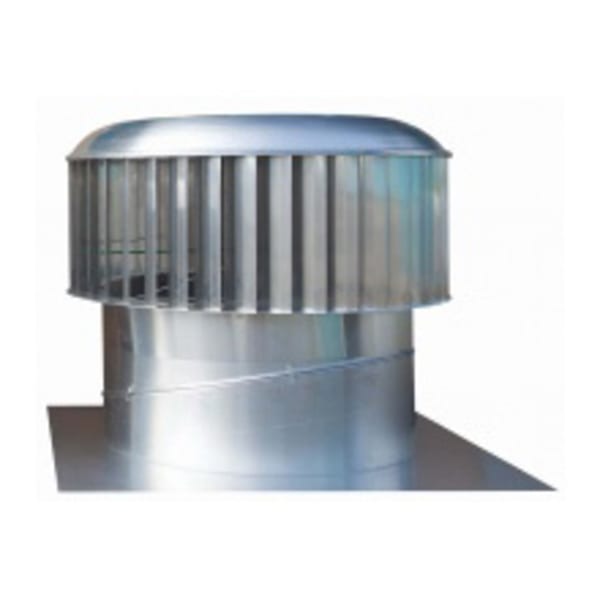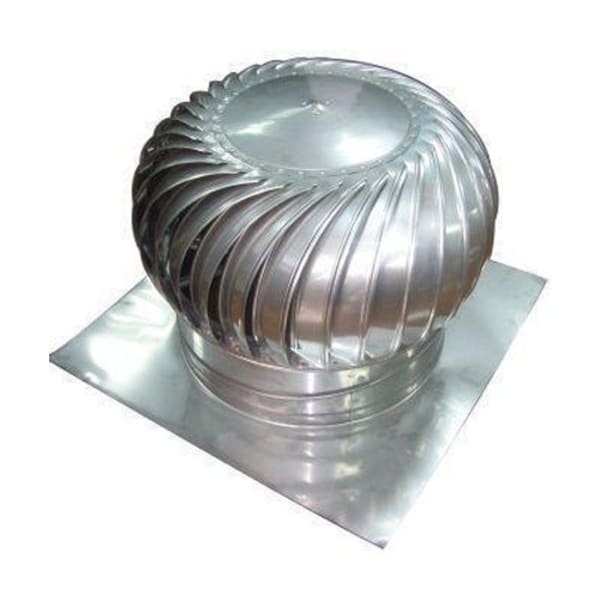Industrial Ventilators
How many Industrial Ventilators do you need?
1. Determine the volume of the building in cubic metres (L x W x H) = VOL
2. Select air changes per hour from table = A/C
3. Select the most suitable number of vents for the roof space with the recommended spacing of 5m. Wider industrial buildings may require one or more ventilators per bay = N
4. Determine litre/sec exhaust capacity required for ventilator for selected number of ventilators = E
And apply equation
E = VOL x A/C x 0.278
N
5. From Local authority records, determine the typical wind speed for your area.
6 From Performance Table select the ventilator throat size which will provide the exhasut rate nearest to but not less than the calculated figure.
Note: 0.278 converts m3/hr to litres/second.
Performance Table
| Throat Size | 150Ø | 300Ø | 600Ø | 900Ø |
| Wind speed | ||||
| 6 km/h | 110 | 270 | 620 | 1640 |
| 12 km/hr | 210 | 480 | 1104 | 2840 |
| 16 km/hr | 280 | 620 | 1420 | 3650 |
Ideal Air Changes
| Building Type | Ideal Air Changes Per Hour |
| Warehouses | 5-8 |
| Factories & Workshops | 5-10 |
| Gymnasiums & Squash Courts | 5-10 |
| Assembly Halls | 10.15 |
| Garages | 10-15 |
| Toilets | 12-15 |
| Laundries | 12-15 |
| Stables/Piggeries/Poultry Houses** | 10.25 |
** Air change rate is dependent upon the number of animals confined but can range from 10-50.
* Air change rate must perform to the local health department's code covering type of installation.
The Importance Of Adequate Make Up Air
Rotary ventilators have a weak capacity to pull against pressure. Therefore it is critical to the performance of rotary ventilators that an adequate capacity be provided in all buildings for the easy entry of make-up air i.e. that fresh air required to replace the stale air exhausted by the vent. In general, make-up air is be provided by open doors, windows and louvres.
$728.00
$1,304.35
$1,854.79
$3,295.66
$1,097.39
$1,220.43
$391.30







